In this in-depth profile from the WatchTime archives, discover how Audemars Piguet brought its manufacture movement, Caliber 3120, to life, from concept to finished caliber, and see behind-the-scenes photos of Audemars Piguet watchmakers at work assembling the movement.
From the initial sketch in 1998 to serial production in 2003, Audemars Piguet created its Caliber 3120 entirely in-house. While the historic brand’s fame has been based for many decades on complicated timepieces, most of these used calibers that date from the years when Audemars Piguet (AP) held a 40% share in Jaeger-LeCoultre. AP sold those shares to the Richemont Group in 2000, and the big investments made since then have been used to finance expansion of AP’s two factories in Le Brassus (AP’s historical headquarters) and Le Locle (AP Renaud & Papi).
The watchmakers Dominique Renaud and Giulio Papi worked at AP before founding their own business in 1986, with the intention of making reliable movements, especially skeletonized ones, for other manufacturers. However, the ensuing flood of orders from renowned watchmaking businesses soon exceeded the capacities of the two young watchmakers and their movement factory. In the 1990s, the duo approached their former employer as a potential investor. AP not only obliged them; it also purchased the lion’s share of the Renaud & Papi factory, which it renamed Audemars Piguet Renaud & Papi. Audemars Piguet currently owns 78.4% of the company, Papi owns 20%, and its managing director Fabrice Deschanel owns the remaining 1.6%. It employs 180 people and produces watch movements from the initial idea to the finished complications. Two thirds of these calibers bear Audemars Piguet’s insignia.
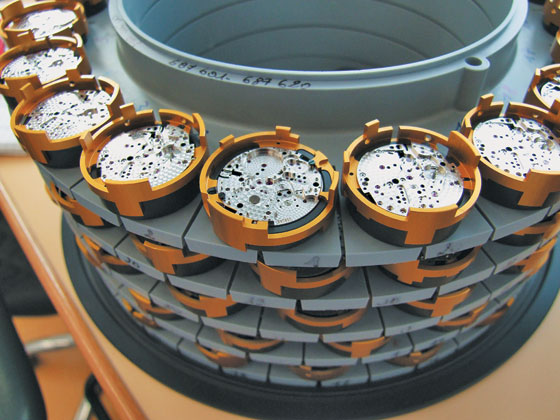
is individually numbered.
Caliber 3120 might not seem very special at first glance. It’s a movement for a three-handed watch with stop-seconds function and instantaneously jumping date display. Its diameter is 26.6 millimeters and its height is 4.26 millimeters. It contains 40 jewels and 278 individual parts. The balance’s frequency is 21,600 semi-oscillations per hour and the power reserve is 60 hours.
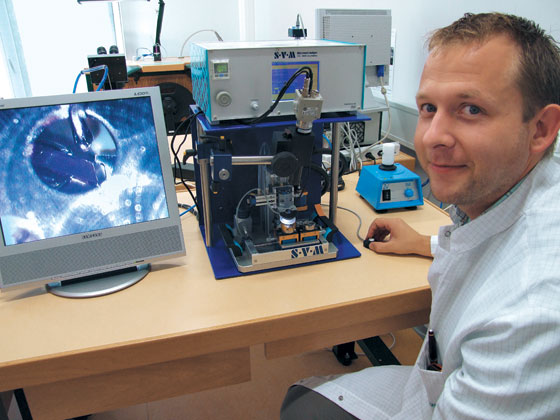
Sixty hours of power isn’t unusual these days, but Caliber 3120 achieves this feat without relying on two barrels. Instead, the longevity derives from the movement’s optimized power-decline curve, which results from a modified mainspring and from changes in the barrel and the gear train’s transmission ratio.
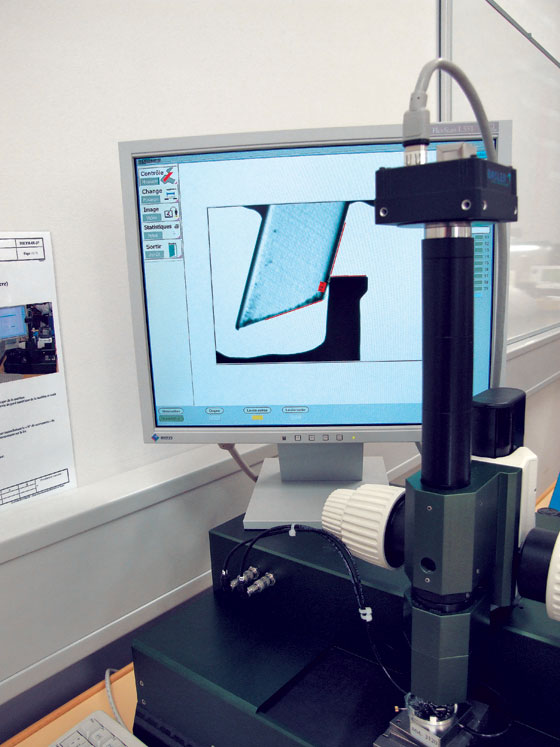
The date mechanism is unusual, too. It’s equipped with a safety system that prevents the date disk from blocking if the owner tries to manually reset the date at midnight. Thanks to this feature, the display can be manually adjusted at any time without jeopardizing its delicate underlying mechanisms. If the date display is allowed to move on its own, it will automatically and instantaneously jump ahead to show the next date precisely at midnight.

A second glance at Audemars Piguet Caliber 3120 discovers more appealing details: there’s a doubly screwed balance bridge to give greater stability, and thus greater security, to the oscillating system; a balance with variable moment of inertia; a flat balance spring; and eight weight screws (known as “Gyromax”) for fine adjustment.
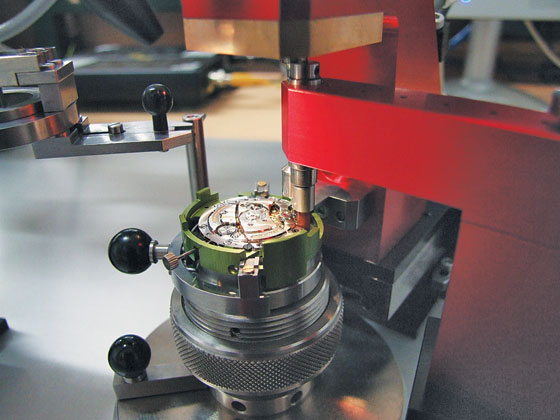
The other bridges are arranged harmoniously. The bridge for the automatic winding mechanism is on the same level as the others, a refinement that contributes to the low-rise slimness of this self-winding caliber. A 22k-gold rotor rotates above this bridge and transfers power to the barrel in both its directions of rotation. Borne atop ceramic ball bearings, the rotor is embellished with the AP monogram and the coats-of-arms of the Audemars and Piguet families.

All components are decorated by hand: the rhodium-plated bridges are adorned with Geneva waves that continue seamlessly from one bridge to the next. The edges of the bridges are beveled. The pathways for the rotor (called trottoirs) are meticulously polished in a spiral pattern. The plates are embellished with circular graining applied by a corundum burin, a machine-guided tool that determines the exact positioning of each successive perlage, ensuring uniformly high quality to tolerances in the 1/100-millimeter range. Similarly narrow tolerances were upheld when polishing the screws’ heads, beveling the drilled holes and setting the jewels, which are inserted into the base plate, some by hand and others by machine.
All of these delicate tasks precede Caliber 3120’s assembly, which is performed by a staff of 25 in a specially furnished atelier where the handcraftsmanship of a manufacture meets the industrialized processes of a small production line. This division of labor means that no individual watchmaker assembles his or her own movement from A to Z; instead, each performs one part of the work and is free to switch to another specialty whenever desired. The goals of this method, AP claims, are to ensure continuity and to guarantee that all processes are fully mastered at every moment.
Assembly begins with the plate: as with other individual components, Audemars Piguet makes its own, while outside suppliers deliver the escapements, springs, wheels and jewels. The company documents and catalogs each part. Every plate is serially numbered, and each number is used only once. This means that each completed movement is traceable back to its genesis through a complex data network, no matter how many years ago it left the factory.
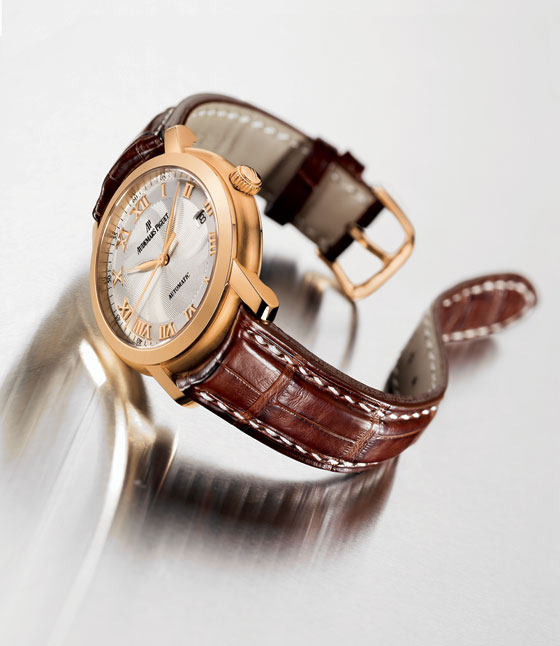
Caliber 3120’s base plate has the winder, date display and quick-resetting mechanism mounted on its dial side and the barrel, gear train, and self-winding mechanism, as well as all of the bridges, installed on the other side. Having Caliber 3120’s automatic-winding bridge coplanar with the gear train’s bridge makes it possible to construct a very slim movement, but the slimness also means that vertical tolerances are extremely narrow. For example, when AP’s watchmakers adjust the vertical play of the wheels, the tolerances range from two to five 1/100s millimeter. The devices used to measure such tiny distances are accurate to the nearest 1/1,000 millimeter.
After making all the proper adjustments, watchmakers disassemble and lubricate the movement. The escape wheel, which is safeguarded against shocks, receives manual lubrication, while a highly precise machine applies oil to 19 other locations. The advantages of mechanical lubrication are twofold: the machine invariably applies exactly the right amount of lubricant and it applies it to every required position without fail.
The oiling process is followed by achevage, or choreographing the fast-paced pas de deux between the anchor and the escapement. The first step is measuring the anchor and escape wheel to the nearest 1/100 millimeter. If their meshing exceeds this tolerance, it requires adjustment by pulling or pushing the pallet jewels. A computer program ensures that each pallet jewel is perfectly positioned, and archives the process.
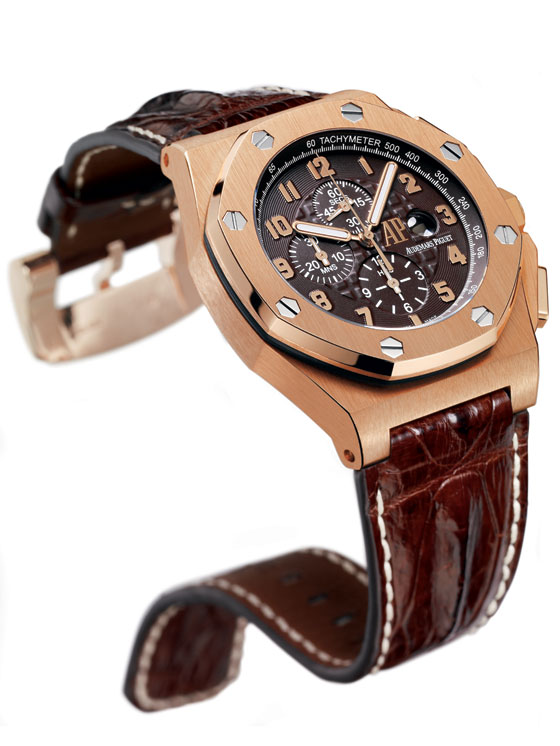
It all culminates in perhaps the most magical moment in the genesis of a movement: the installation of the balance, which awakens the caliber into ticking life. Another round of lubrication to the escape wheel follows while the movement is running. Again, ultramodern computer technology guarantees uniformity by doling out precisely the correct volume of oil every time.
AP designed a special fine- adjustment device to facilitate the tasks of putting the caliber into beat and adjusting the rate. Two screws in the balance bridge at the stud adjust the beat; rotating the eight weight screws on the Gyromax balance regulate the rate. Turning these screws inward accelerates the watch; turning them outward slows it down. Each alteration can be precisely viewed on a computer monitor.
After the movement has been fully assembled, it undergoes three days of testing to ensure the accuracy of its rate. To pass the tests, Caliber 3120’s rate must perform within a narrow range centered on an average value of +3.5 seconds. Afterward, the cased movement is subjected to long-term testing on specially designed devices that simulate wearing habits.
One day, AP hopes, Caliber 3120 will be even more precise. Once the company’s engineers have cleared some technical hurdles, AP will incorporate into the movement a new escapement, one that the technicians at the two production facilities in Le Brassus and Le Locle spent many years developing. After a lengthy testing phase, the escapement made its debut in 2006 inside the exclusive Cabinet No. 5 watch in the Tradition d’Excellence collection. Intended as the herald of a new generation of AP movements, this escapement will ultimately be used in all the company’s new calibers. Its production, however, demands extremely narrow manufacturing tolerances, compliance with rigorous assembly guidelines and the utmost meticulousness in the fine adjustment. Thus, the industrialization process has been slow.
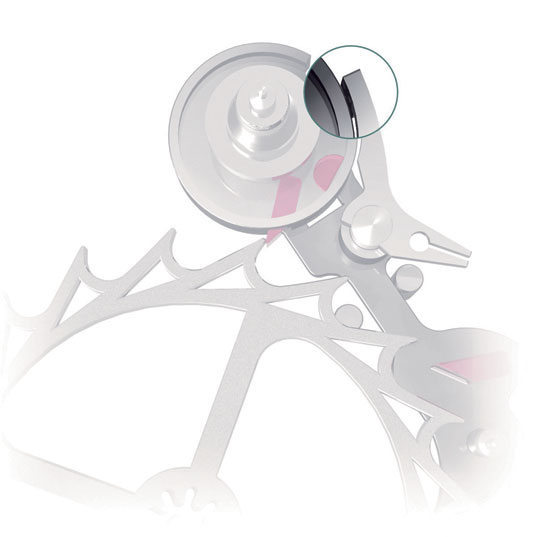
The AP escapement was inspired by a mechanism conceived some 200 years ago by Robert Robin, who envisioned an escapement with direct impulsion (and thus a high degree of efficiency) in combination with a movable conveyance element, such as an anchor. Robin’s innovative mechanism was so far ahead of its time that it exceeded the technical possibilities of its era, which is why it lapsed into oblivion for the following two centuries.
More or less by chance, a watchmaker and design engineer at AP came upon Robin’s old sketches and recognized the theoretical advantages of the system. The new and further evolved AP escapement is a so-called “detached escapement with lost stroke.” This means that only one impulse occurs during two successive semi-oscillations of the balance. The escape wheel conveys force directly to the balance, without an anchor intervening between them. The anchor serves only to position the escape wheel.

The device functions as follows. The first impulse comes from the roller jewel and unlocks the escape wheel. It enters the flow of force, and conveys an impulse from one of the escape wheel’s teeth directly to the balance via a roller jewel affixed to the roller. At the same time, the roller jewel engages, as in a Swiss lever escapement, with the pallet fork to position the anchor so that its exit pallet again locks the escape wheel. Watchmakers use the terms “impulse” (conveyance of energy to the balance) and “drop” (a tooth on the escape wheel falls against the surface of the exit pallet). On the balance’s return swing, the roller jewel again engages with the pallet fork and repositions the anchor: the exit pallet slides off one of the escape wheel’s teeth and allows the next tooth to fall against the entry pallet (for a new “drop”). The escape wheel moves just enough to allow the pallet jewel on the roller to narrowly pass the escape wheel so that no impulse reaches the balance during this semi-oscillation. Watchmakers call this motion of the escape wheel the “lost stroke.” Although only one impulse affects the regulating organ during each full oscillation (or two semioscillations) of the balance, the escape wheel advances twice during this interval. These motions are so fast that the naked eye can scarcely detect them.


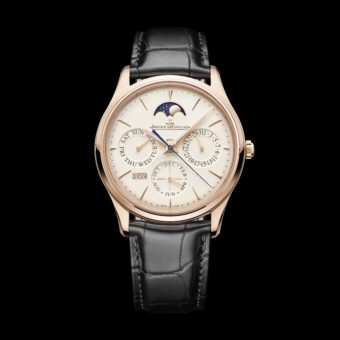
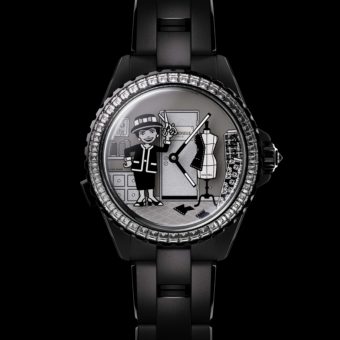
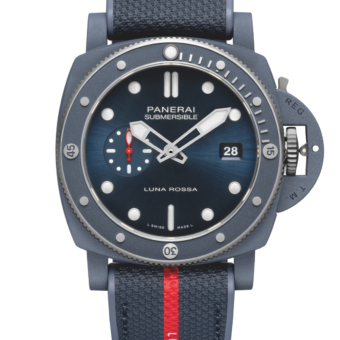
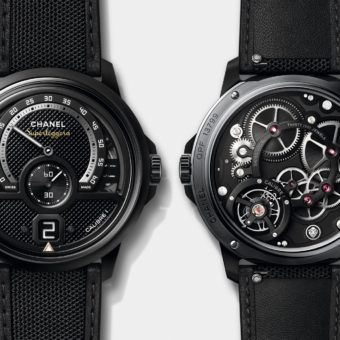
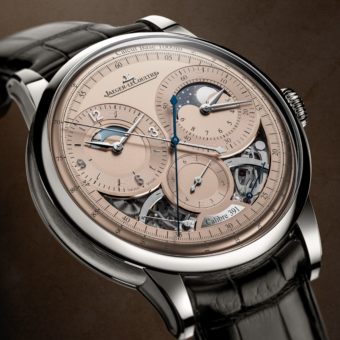
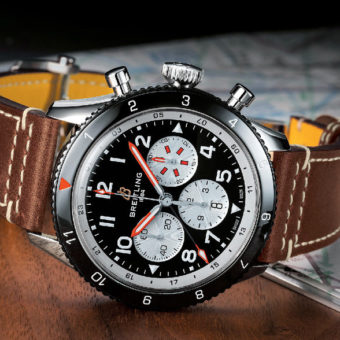
Gyromax is not registered by Patek Philippe?